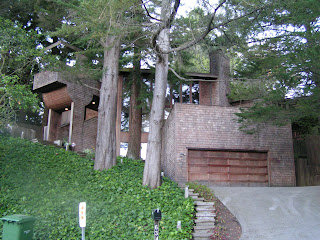
I took my green eyes on me and walked though a pretty large part of the city. Here is some more pictures of "Green eyes in San Francisco".

Despite the cars..


Those pictures were taken under my lunch break between a class and a lecture about evaluation at the Foundation Center in downtown. It was for 1½ hour and I walked up to Broadway highest hill to take some pictures of our "van view" which I forgot to take pictures of before, saw China Town again and feel that I have a pretty good feeling about this city.
I like I like I like.
San Francisco is quite amazing.

Where its not buildings on the hills, like this pictures and the cars on the sloping ground, there was a lot of parks. The view.. you can see the ocean from the streets in the center of the cities. And if you climb up to for example Corona Heights Park, my #1 favourite (where you can read the text "don't feed the coyoties"), you have views in every direction, as far as to Oakland, Berkeley and in the other direction the Pacific ocean.
The green, the closeness to nature is here, its just some things that should be different.. help me to sort that out with comments!

































